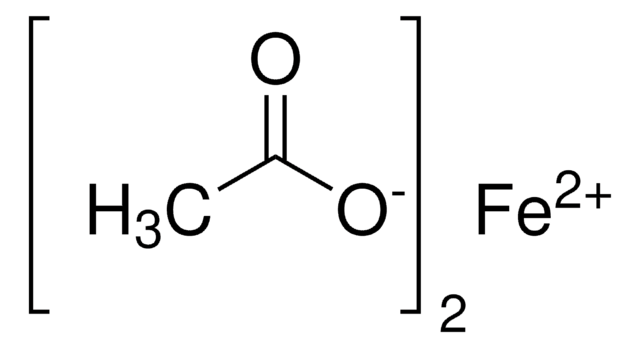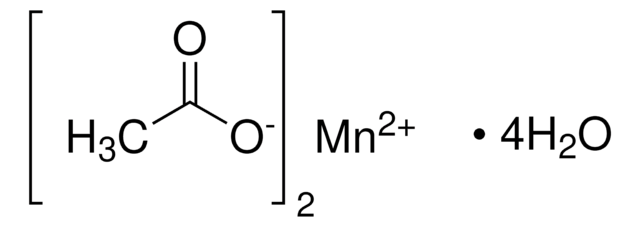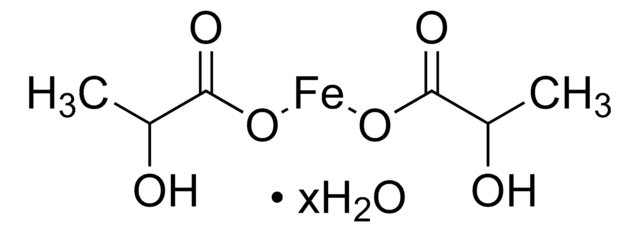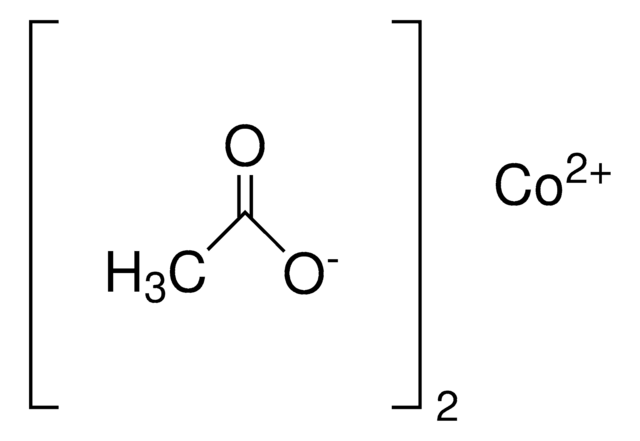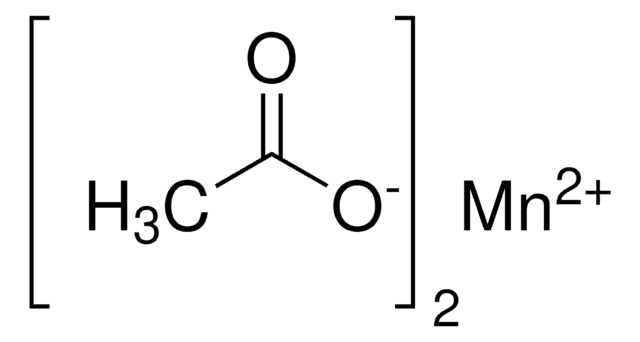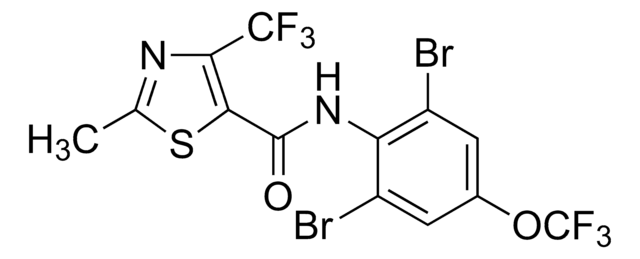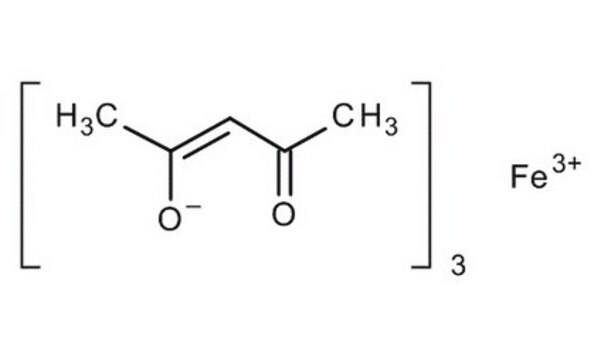Kluczowe dokumenty
517933
Iron(II) acetate
≥99.99% trace metals basis
Synonim(y):
Ferrous acetate, Iron acetate [Fe(OAc)2 ], Iron diacetate
About This Item
Polecane produkty
Poziom jakości
Próba
≥99.99% trace metals basis
Formularz
solid
przydatność reakcji
core: iron
mp
190-200 °C (dec.) (lit.)
ciąg SMILES
CC(=O)O[Fe]OC(C)=O
InChI
1S/2C2H4O2.Fe/c2*1-2(3)4;/h2*1H3,(H,3,4);/q;;+2/p-2
Klucz InChI
LNOZJRCUHSPCDZ-UHFFFAOYSA-L
Szukasz podobnych produktów? Odwiedź Przewodnik dotyczący porównywania produktów
Powiązane kategorie
Opis ogólny
Zastosowanie
- Prekursor do syntezy tlenku żelaza i nanostruktur na bazie żelaza, które są stosowane jako materiały anodowe w bateriach litowo-jonowych i superkondensatorach.
- Prekursor w syntezie nanocząstek tlenku żelaza. Cząstki te są włączane do nanowłókien węglowych do zastosowań w superkondensatorach.
- Prekursor do syntezy nanocząstek hematytu do zastosowań w ogniwach słonecznych. Nanocząstki te wykazują właściwości optyczne zależne od kształtu i mogą być wykorzystywane do obrazowania, fotokatalizy i ogniw słonecznych. Produkt został wykorzystany do syntezy nanocząstek tlenku żelaza, które następnie wykorzystano do utworzenia nanocząstek typu rdzeń-powłoka z tlenku żelaza i poli(glikolu etylenowego). Nanocząstki rdzeniowe badano pod kątem samoorganizacji na granicy faz ciecz-ciecz (SALI), tworząc monowarstwy.
Opakowanie
Kod klasy składowania
11 - Combustible Solids
Klasa zagrożenia wodnego (WGK)
WGK 3
Temperatura zapłonu (°F)
Not applicable
Temperatura zapłonu (°C)
Not applicable
Środki ochrony indywidualnej
dust mask type N95 (US), Eyeshields, Gloves
Wybierz jedną z najnowszych wersji:
Masz już ten produkt?
Dokumenty związane z niedawno zakupionymi produktami zostały zamieszczone w Bibliotece dokumentów.
Klienci oglądali również te produkty
Produkty
Professor Randal Lee (University of Houston, USA) discusses design considerations for iron oxide magnetic nanospheres and nanocubes used for biosensing, including synthetic procedures, size, and shape. The effects of these variables are discussed for various volumetric-based and surface-based detection schemes.
Magnetism and magnetic materials have been of scientific interest for over 1,000 years. More recently, fundamental investigations have focused on exploring the various types of magnetic materials and understanding the magnetic effects created by electric currents.
The properties of many devices are limited by the intrinsic properties of the materials that compose them.
Nasz zespół naukowców ma doświadczenie we wszystkich obszarach badań, w tym w naukach przyrodniczych, materiałoznawstwie, syntezie chemicznej, chromatografii, analityce i wielu innych dziedzinach.
Skontaktuj się z zespołem ds. pomocy technicznej